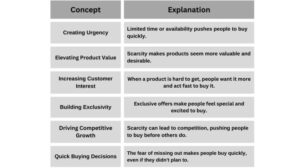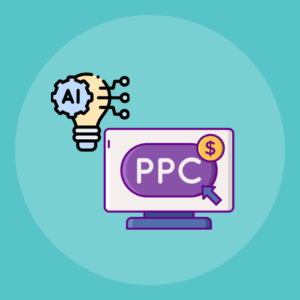
In today’s fast-paced digital landscape, businesses are constantly seeking ways to effectively reach their audience. SMS list building vs email lists has emerged as a key topic, highlighting the unique advantages each platform offers for marketing strategies. Understanding these differences can help marketers optimize their outreach efforts and enhance customer engagement.
SMS marketing boasts higher open rates and immediacy, while email allows for richer content and comprehensive analytics. This exploration dives into how businesses can leverage both channels effectively, weighing the pros and cons of each to craft powerful marketing campaigns.
SMS List Building
SMS list building has emerged as a powerful marketing tool, gaining traction due to its immediacy and high engagement rates. Compared to traditional email lists, SMS marketing provides a quicker way to reach audiences, resulting in more effective communication. SMS messages boast an impressive open rate of around 98%, while emails typically hover around 20%. This stark contrast highlights the potential of SMS for brands aiming to create stronger connections with their customers.
Benefits of SMS List Building
The advantages of SMS list building over traditional email lists are significant. SMS campaigns can deliver messages instantly, ensuring that your audience receives timely updates or promotions. Furthermore, SMS marketing often leads to higher engagement rates, as messages are more likely to be read immediately compared to emails, which may languish in inboxes. Key benefits include:
- Higher Open Rates: SMS messages are generally opened within minutes, enhancing the chances of immediate interaction.
- Direct Communication: Text messages create a personal connection, allowing brands to engage with customers on a one-to-one basis.
- Increased Conversion: The direct nature of SMS often leads to higher conversion rates, making it easier for customers to take action.
Importance of Consent in SMS Marketing
Consent is a crucial element in SMS marketing. Obtaining explicit permission before sending messages not only complies with regulations such as the Telephone Consumer Protection Act (TCPA) but also builds trust with your audience. Best practices for obtaining consent include:
- Clear Opt-in Process: Ensure subscribers understand what they are signing up for by providing clear information about the type and frequency of messages.
- Double Opt-in: Consider implementing a double opt-in mechanism where users confirm their subscription via a follow-up message.
- Easy Opt-out Options: Always provide an easy way for users to opt out of SMS communications, reinforcing trust and respect for their preferences.
Effective Segmentation of SMS Lists
Segmenting your SMS lists allows for targeted marketing campaigns that resonate with different audience segments. Effective segmentation enhances personalization, ultimately leading to improved engagement. Consider the following strategies for segmenting SMS lists:
- Demographic Segmentation: Categorize subscribers based on age, gender, location, or other demographic factors to tailor messages accordingly.
- Behavioral Segmentation: Analyze interactions and engagement history to identify different customer behaviors and preferences, customizing messages based on these insights.
- Purchase History: Group subscribers based on their buying patterns to send them relevant offers or reminders about products they’ve shown interest in.
Effective segmentation leads to personalized messages that improve customer experience and drive higher conversion rates.
Email List Building

Building an effective email list is a fundamental component of any successful digital marketing strategy. Unlike social media platforms where audience reach can fluctuate, a well-cultivated email list provides a reliable avenue for direct communication, engagement, and conversion. It allows businesses to connect with their customers on a personal level, ensuring that messages reach the right people at the right time.Key strategies for growing an email list include offering value, utilizing multiple channels, and maintaining consistent engagement with subscribers.
By implementing specific methods, brands can effectively expand their reach and increase conversions.
Strategies for Growing an Email List
To successfully grow an email list, it’s crucial to adopt a multifaceted approach that resonates with potential subscribers. Here are several effective strategies:
- Lead Magnets: Offering valuable resources like eBooks, checklists, or free trials in exchange for an email address attracts sign-ups.
- Social Media Integration: Promote your email list on social media platforms, where potential subscribers can easily find and engage with your offerings.
- Website Pop-ups: Utilize strategically timed pop-ups on your website to capture visitors’ emails without being intrusive.
- Referral Programs: Encourage existing subscribers to refer friends and family by providing incentives like discounts or exclusive content.
- Content Upgrades: Enhance existing blog posts or articles with specific resources that require an email subscription to access.
Creating engaging email content is vital for driving conversions. Subscribers are more likely to engage with content that speaks to their interests and needs, thus fostering a stronger connection with the brand.
Creating Engaging Email Content
Crafting compelling email content is essential for maintaining subscriber interest and driving action. Consider the following elements when developing email messages:
- Personalization: Utilize subscriber data to tailor emails according to individual preferences, such as using their name or sending targeted offers based on their purchase history.
- Clear Call-to-Action (CTA): Each email should include a prominent and persuasive CTA that encourages subscribers to take desired actions, such as making a purchase or signing up for an event.
- Engaging Subject Lines: The subject line is the first impression; make it catchy and relevant to improve open rates.
- Value-Driven Content: Provide useful information, special offers, and insights that add value rather than focusing solely on sales pitches.
Additionally, landing pages play a pivotal role in email list building, acting as dedicated spaces designed to convert visitors into subscribers.
Role of Landing Pages in Email List Building
Landing pages serve as focused environments that facilitate the capture of email addresses. Critical design elements of an effective landing page include:
- Minimalist Design: A clean and simple layout helps visitors focus on the content, reducing distractions and improving conversion rates.
- Compelling Headline: A strong, clear headline communicates the value proposition and encourages visitors to stay on the page.
- Form Placement: Prominently place the email sign-up form above the fold for easy access, ensuring that visitors can subscribe quickly.
- Engaging Visuals: Use visuals that complement the messaging, such as images or videos that illustrate the value of signing up.
- Social Proof: Incorporate testimonials or subscriber counts to build trust and credibility among potential sign-ups.
By implementing these strategies and focusing on the key elements of email content and landing pages, businesses can effectively grow their email lists and foster meaningful connections with their audience.
Comparative Analysis of SMS vs Email Lists
As businesses explore marketing strategies, the choice between SMS and email list building becomes crucial. Both mediums offer unique advantages and challenges, making it essential to understand their performance metrics and costs. A comparative analysis reveals how these two channels stack up against each other in terms of response rates, cost-effectiveness, and overall marketing effectiveness.
Response Rates of SMS vs Email Marketing Campaigns
When comparing response rates, SMS marketing campaigns significantly outperform email campaigns. Research indicates that SMS open rates hover around 98%, while email open rates average only 20%. Notably, SMS messages are typically read within three minutes of being received, enhancing immediate engagement. Here’s a brief comparison of response metrics to illustrate the effectiveness of each channel:
| Metric | SMS Marketing | Email Marketing |
|---|---|---|
| Open Rate | 98% | 20% |
| Click-Through Rate | 36% | 2.5% |
| Response Time | Within 3 minutes | Within 90 minutes |
This data underscores the high engagement potential of SMS, allowing businesses to connect with their audience effectively.
Cost-Effectiveness of SMS vs Email List Building
Cost effectiveness is a critical factor when deciding between SMS and email list building. While the initial setup costs for SMS marketing can be higher due to platform fees and carrier charges, the return on investment often justifies the expense. For instance, the average cost per SMS is around $0.01 to $0.05, while email marketing can be more variable, depending on the service provider and size of the email list.When considering the potential revenue generated from higher engagement rates, SMS marketing can yield a greater ROI.
A study found that SMS campaigns could generate an ROI of up to 45%, compared to email’s average ROI of 20%. To summarize the cost-effectiveness of SMS and email, consider the following points:
- SMS: Higher engagement leads to potentially higher sales, despite the higher cost per message.
- Email: Lower operational costs but often results in lower engagement and conversion rates.
Pros and Cons of SMS and Email Marketing Strategies
Understanding the strengths and weaknesses of SMS and email marketing can guide businesses in choosing the best strategy for their needs. Below is a table that Artikels the pros and cons of each approach.
| Strategy | Pros | Cons |
|---|---|---|
| SMS Marketing |
|
|
| Email Marketing |
|
|
This comparison highlights the distinct characteristics of each marketing channel, providing insights that can help businesses tailor their strategies for optimal engagement and conversion.
Related Marketing Strategies
In the digital marketing landscape, integrating various strategies plays a crucial role in enhancing both SMS and email marketing efforts. Understanding how to leverage these strategies can provide businesses with a competitive edge in building and engaging their subscriber lists.Link popularity significantly enhances the effectiveness of both SMS and email marketing efforts. By increasing the number of quality backlinks to your website, you can boost your website’s visibility in search engines.
This visibility drives more traffic, which can then be converted into subscribers through engaging content and effective calls to action.
Impact of Paid Surveys on List Building and Customer Engagement
Paid surveys serve as an effective tool for list building and improving customer engagement. They not only incentivize participation but also gather valuable insights about customer preferences and behaviors. By integrating these surveys into your marketing funnel, you can encourage subscribers to share their opinions while simultaneously expanding your email and SMS lists.
Increased Engagement
Offering rewards for survey completion keeps subscribers engaged and motivated.
Targeted Data Collection
Surveys help in collecting specific data that can tailor your marketing strategies.
Enhanced Trust
Customers feel valued when their opinions are sought, building a relationship of trust.
“Surveys are a two-way street: they provide brands with valuable data while giving consumers a voice.”
Leveraging Podcasting to Grow SMS and Email Lists
Podcasting has emerged as a powerful medium for content marketing. By utilizing podcasts, businesses can effectively expand their SMS and email lists. The auditory nature of podcasts allows for a more personal interaction with audiences, making them feel more connected to the brand.
Incorporate Call-to-Action
Encourage listeners to subscribe to your email or SMS list for exclusive content, updates, or promotions.
Offer Content Upgrades
Provide additional resources related to podcast topics in exchange for email or SMS sign-ups.
Promote Across Platforms
Share podcast episodes on social media and blog posts, directing traffic back to your subscription landing pages.
“A well-placed call-to-action in a podcast can lead to a significant increase in subscriber lists.”
Incorporating these related marketing strategies not only enhances engagement but also strengthens the overall effectiveness of SMS and email marketing efforts. The synergy created between these platforms can lead to substantial growth in audience reach and customer loyalty.
Advertising and Promotion Techniques
Effective advertising and promotion techniques are essential for enhancing the reach of SMS and email marketing campaigns. When integrated thoughtfully, these strategies can significantly increase audience engagement and conversion rates. This section Artikels key PPC advertising strategies that complement SMS and email marketing, explores the role of product creation in list building, and provides a detailed guide to launching a product with the help of both channels.
PPC Advertising Strategies
Pay-per-click (PPC) advertising can significantly enhance the effectiveness of SMS and email campaigns. When combined, these marketing tactics not only drive traffic but also build valuable customer relationships. Here are some strategies to consider:
- Targeted Ads: Utilize demographic and behavioral targeting to reach specific segments of your audience. Platforms like Google Ads and Facebook Ads allow for precise targeting, ensuring your ads reach the right individuals who are likely to engage with your SMS or email content.
- Remarketing Campaigns: Implement remarketing strategies to re-engage users who have previously interacted with your SMS or email campaigns. By showing tailored ads to these users, you increase the chances of conversion and brand recall.
- Ad Extensions: Enhance your PPC ads with extensions that provide additional information, such as links to landing pages, phone numbers for quick calls, or location details. This increases the ad’s visibility and aids in driving traffic to your SMS or email sign-up pages.
- A/B Testing: Regularly test different ad creatives and messaging to determine what resonates best with your audience. This data can inform both SMS and email content strategies, ensuring consistency in messaging across all platforms.
- Conversion Tracking: Implement tracking tools to measure the effectiveness of your PPC campaigns in generating leads for your SMS and email lists. Analyzing this data allows for continuous improvement and refinement of your approach.
Role of Product Creation in List Building
Creating a product and aligning it with SMS and email marketing campaigns plays a crucial role in building and maintaining your audience. Product offerings should be tailored to the preferences and needs of your target market, effectively driving sign-ups for both channels. Product creation should focus on:
- Identifying Market Needs: Conduct thorough research to determine what products your target audience desires. Surveys, feedback forms, and sales data can provide insights into customer preferences.
- Value Proposition: Clearly define the unique value that your product offers. This should be communicated effectively through your SMS and email campaigns to entice potential customers.
- Launch Excitement: Generate buzz around your product launch through teasers in your SMS and email communications. This can lead to increased anticipation and engagement from your lists.
- Exclusive Offers: Provide exclusive access or discounts to your SMS and email subscribers. This encourages sign-ups and fosters loyalty among your existing audience.
Step-by-Step Guide for Launching a Product
Launching a product effectively while utilizing SMS and email lists can maximize reach and impact. Here’s a structured approach to ensure a successful launch:
- Define Your Goals: Establish clear objectives for what you want to achieve with your product launch, such as sales targets or subscriber growth.
- Create a Landing Page: Design a dedicated landing page for your product that captures email sign-ups and includes SMS opt-in options. This page should clearly Artikel the product features, benefits, and any promotional offers.
- Build Anticipation: Use both SMS and email to build excitement leading up to the launch. Share behind-the-scenes content, countdowns, and early access opportunities for subscribers.
- Launch Announcement: On launch day, send out a coordinated SMS and email announcement, ensuring both messages are aligned in tone and content. This boosts visibility and engagement across channels.
- Follow Up: Post-launch, send follow-up messages to thank your subscribers and encourage feedback. This not only strengthens relationships but can also provide valuable insights for future campaigns.
Outcome Summary

In conclusion, the debate between SMS list building and email lists is not about choosing one over the other but rather understanding how to integrate both strategies for maximum impact. By recognizing their distinct advantages and employing best practices, businesses can create a robust marketing framework that resonates with their audience and drives conversions.
Query Resolution
What are the main benefits of SMS list building?
SMS list building offers higher engagement rates, quicker response times, and direct access to customers who prefer instant communication.
How can I ensure consent for SMS marketing?
Always obtain explicit permission from users before sending SMS messages, typically through sign-up forms or text-to-join options.
What is the average response rate for SMS compared to email?
SMS typically has a response rate of around 45%, while email averages about 20%, making SMS more effective for immediate outreach.
Can I integrate SMS and email marketing strategies?
Yes, combining both strategies allows for a comprehensive approach, leveraging the strengths of each platform to reach a broader audience.
What role do landing pages play in email list building?
Landing pages are crucial for converting visitors into subscribers by providing a focused message and an easy sign-up process.





